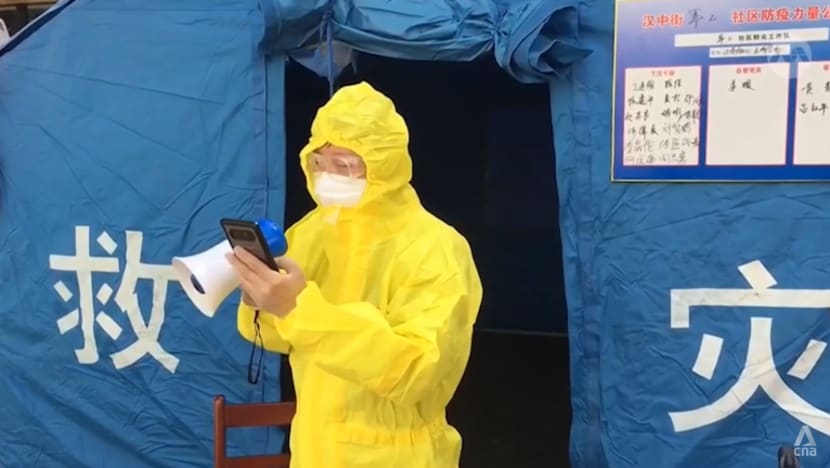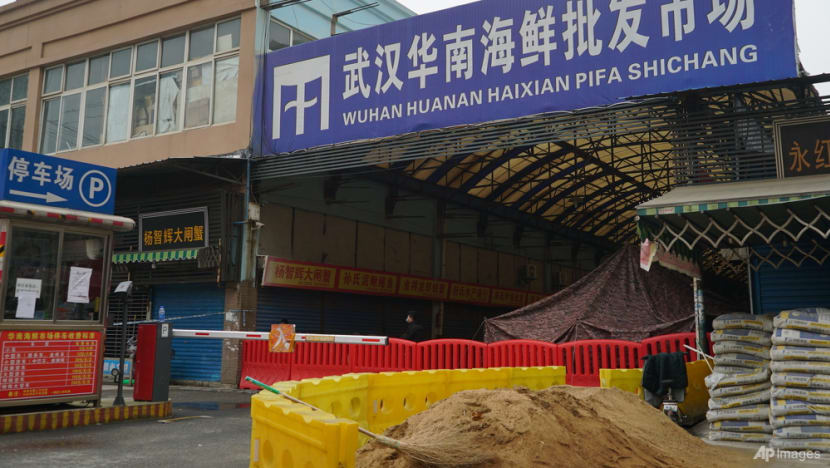China’s Wuhan, where COVID-19 was first detected, struggles to shed legacy of pandemic
For some, memories of the lockdown remain and questions persist.

Full house at a theatre in Wuhan, China. (Image: Li Jinglun)
WUHAN: It has been more than three years since the Chinese city of Wuhan reported the world’s first COVID-19 cases, and underwent the world’s first pandemic lockdown.
Now, about half a year after China reopened its borders, locals have been keen to move on with life.
But memories and remnants of the pandemic remain hard to shake off.
For Wuhan theatre actor Li Jinglun, suiting up for a performance in recent months has taken on a familiar yet surreal feel.
During the pandemic years, he performed largely to an empty theatre, with the audience watching online.
Since China relaxed its strict zero-COVID measures at the end of last year, physical crowds have been trickling into theatres.
While people were initially apprehensive and anxious about returning to packed public spaces, business is now back in full swing.

Shows by Mr Li’s performance troupe were sold out during the Labour Day holidays in May, and the company is looking at expanding its seating capacity.
“(The theatre) wasn’t immediately full right away,” he said. “At the very beginning, when the curbs were just lifted, many people maintained a wait-and-see attitude. They still had some concerns and did not dare to go to a public place.”
THE FIRST LOCKDOWN
CNA first spoke to Mr Li in April 2020, when Wuhan emerged from its historic COVID-19 lockdown, during which the city of 11 million people was sealed off for 76 days.
The actor had then just completed what he thought would be his last volunteer shift of checking exit documents at a neighbourhood.

He had expressed optimism that life would soon return to normal, and theatre shows could fully resume.
Little did he expect to be called on to volunteer again in October 2022, as authorities doubled down on strict curbs to try and contain the more contagious Omicron strain spreading in the country.
Just a few months later, China dropped most of its pandemic restrictions in an abrupt U-turn to its zero-COVID policy, allowing travel and public activities to return.
“When (the country) re-opened, it didn't feel sudden. I felt that it was time. Everyone felt that it was time to open up and let everyone catch their breath,” said Mr Li.
China’s health authorities in January reported that about 80 per cent of the population had been infected by COVID-19.
The pandemic years put a strain on the country’s healthcare system and frontline workers.
Mr Li felt moved during the lockdown to write and record a stage play about the situation but it was never made public.
“We did not want the situation to be used as a publicity point at such a time. Since things are better, we should first think about a better tomorrow,” he said.
“Maybe in a few years, we will stage a performance about healthcare workers, or being a volunteer, or the experience of regular people. This era, the pandemic, we will not forget these things, we cannot forget.”
LIFE NORMALISES
Like many other parts of the country, an increasing number of people in Wuhan are choosing to go maskless.
The scanning of health codes, once a way of life, is now a thing of the past.

However, for some, memories of the lockdown remain and questions persist.
“There is still trauma. Maybe the reality we saw was crueller than what the news reported. For example, the number of deaths,” a Wuhan resident, whose mother was among the first wave of those infected, told CNA.
“We are exposed to what is said to be the real data, but for various reasons, there is a difference between what we see in Wuhan and the reported data. I accept it because how should I put it? The country has its considerations, right?”
There are also physical reminders of the last three-and-a-half years.
The Huanan seafood market in Jianghan district, the epicentre of the outbreak, remains boarded up and inaccessible. It was shuttered in January 2020 when the earliest COVID-19 cases linked to the market were first announced.
Today, it remains at the centre of a controversial debate over the origins of the virus.

CONTROVERSIES REMAIN
In March this year, China released data it had gathered in late 2019 from the market.
The World Health Organisation (WHO) criticised Beijing for not sharing the genetic information earlier.
Separate teams of international and Chinese scientists had also made differing conclusions from the data.
“This goes back to the early politicisation, particularly between the United States and China, at the governmental levels,” said associate professor Nicholas Thomas, of the City University of Hong Kong’s policy and international affairs department.
“The reality is that any data is now going to be contested, not just on questions of scientific accuracy and merit, but also with people trying to score political points off the data being released.”
Chinese officials have accused the WHO of trying to smear China. They have tried to deflect criticism over Beijing’s handling of the virus, especially in the early stages, and refuted accusations that the virus may have leaked from a lab in Wuhan.
Instead, China has suggested that the virus was brought into the country on cold food products, among other theories.
While questions remain over what narrative authorities will take if another flare up occurs, observers said it is clear the world may have already lost the opportunity to learn from the COVID-19 experience to prevent another pandemic.















